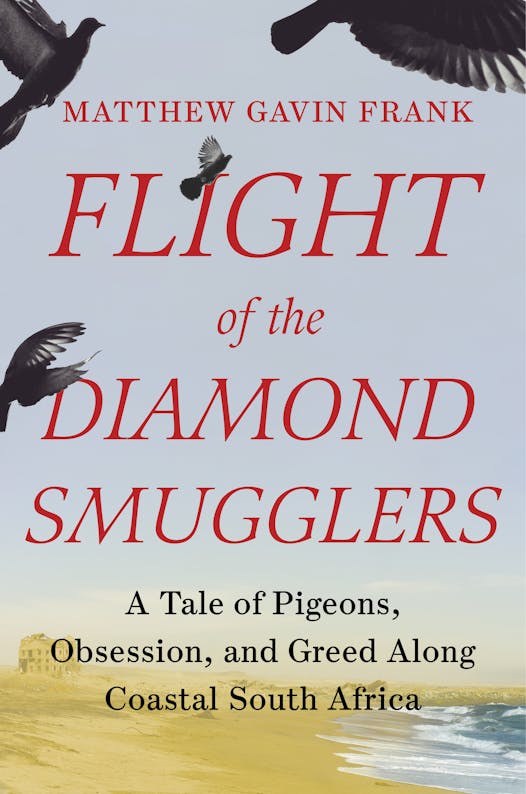Most people probably know the De Beers Corporation's long-running tagline, "A diamond is forever," coined in 1947 and named by Advertising Age as the best ad slogan of the 20th century. Fewer people know that De Beers owned a large section of South Africa's West Coast called Die Sperrgebiet, or the Forbidden Zone, and officially closed it off "to the public for the better part of eighty years (the heyday of diamond exploration and mining in the area), plunging the local communities into a mysterious isolation."
Most people probably know, too, that pigeons are a familiar or even a nuisance bird in cities around the globe. But few people are aware, as Matthew Gavin Frank illuminates in his slim but ambitious "Flight of the Diamond Smugglers," that one of the chief methods of smuggling is to sneak "trained carrier pigeons onto the mine property, affixing diamonds to the birds, and sending them into the air to fly from the mines to the workers' homes."
Such unexpected connections abound in Frank's lyrical work, wherein — through visits to portions of this land, declared by De Beers in 2007 to be "overmined" — he excavates the troubling history of this little-known landscape and the illicit industry of trafficking the precious stones.
The author of four previous books of nonfiction, including "Preparing the Ghost: An Essay Concerning the Giant Squid and its First Photographer," as well as three books of poetry, Frank blends investigative journalism, historical research and rhapsodically written memoir to examine mankind's relentless exploitation of the Earth and all its creatures, including the humans themselves.
The sweeping narrative begins with a personal loss when Frank and his partner Louisa, after their sixth miscarriage, travel to her home country "to conduct a funeral ceremony of sorts" at the Big Hole in Kimberley. A former open-pit and underground diamond mine active from 1871 to 1914, the property has since been rebranded as a tourist attraction, a veritable "manmade Grand Canyon." In attempting to contextualize his grief, Frank becomes obsessed with the history of the site.
From there, Frank is able to explore the story of the bigger network of black market forces by homing (pigeon pun intended) in on one particular diamond digger, 13-year-old Msizi, and his bird Bartholomew, both of them risking life and limb to spirit the cargo out of the mines. The real villain of the tale is extractive capitalism, but that force finds a face in the story's biggest antagonist, the nefarious Mr. Lester, a security agent known as "the executioner who controls all the other executioners."
Frank seeds his story with surprising but interrelated facts and anecdotes ranging from Isaac Newton (a pigeon aficionado) to the Voyager probes, from the Venetian painter Canaletto to the colonizer and robber baron Cecil Rhodes.
In refusing to romanticize the landscape or the piracy that takes place upon it, Frank's book suggests that perhaps what diamonds are forever really means is that so is avarice. But maybe so, too, is "the magic of the pigeons."
Kathleen Rooney is the author of "Lillian Boxfish Takes a Walk" and, most recently, "Cher Ami and Major Whittlesey."
Flight of the Diamond Smugglers
By: Matthew Gavin Frank.
Publisher: Liveright, 224 pages, $25.95.

Summer Camp Guide: Find your best ones here

Lowertown St. Paul losing another restaurant as Dark Horse announces closing

Critics' picks: The 11 best things to hear, do and see in the Twin Cities this week

Critics' picks: The 9 best things to do and see in the Twin Cities this week



